Mallikarjuna Temple in Andhra Pradesh is counted among the most revered Jyotirlingas of Lord Shiva, attracting millions of pilgrims and heritage enthusiasts every year. This majestic pilgrimage site stands magnificently atop the Srisailam Hills in Andhra Pradesh and welcomes devotees from different corners of the world. It radiates sublime architectural brilliance and is renowned among Hindus for its Dravidian design and sacred ambiance. However, the spirituality at Mallikarjuna Temple endures forever but choosing when to visit describe your travel experience.
This extensive guide leads you through the perfect window for Mallikarjuna Temple visits by explaining environmental factors and seasonal qualities and comfort criteria that create effortless and purposeful travel experiences.
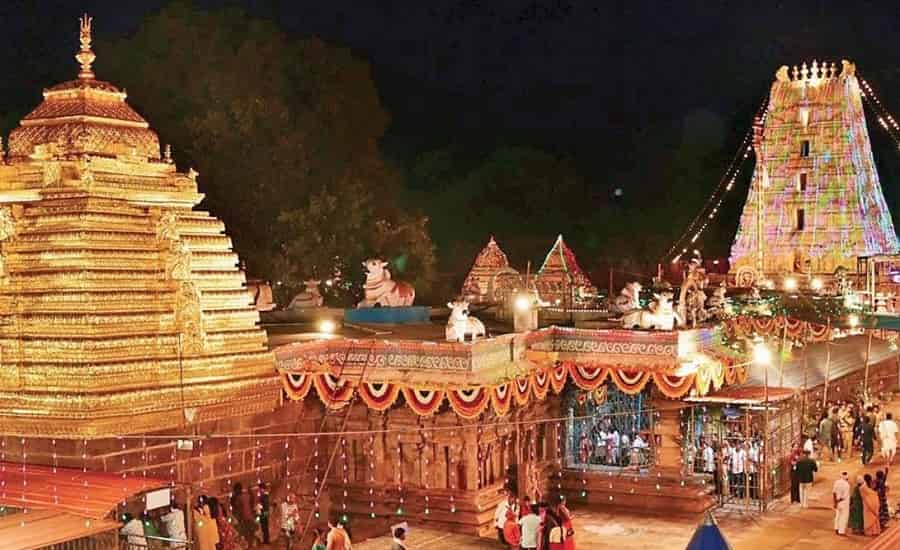
Spiritual Significance of Mallikarjuna Temple
According to Hindu mythology, the temple stands holy because it contains two significant religious titles. It functions as both a Jyotirlinga temple number twelve and a Shakti Peetha holy site where people venerate Bhramaramba as Goddess Parvati. The temple gets its name from the cosmic union of Lord Shiva (Mallikarjuna) with Goddess Parvati which represents divine energy in balance. This sacred location holds deep emotional power since Shiva revealed himself at this precise location after his son Kartikeya’s death to provide comfort.
Geographical Essence
Ranked among the Nallamala Forests and positioned by the river Krishna, this ancient temple stands in a forested area and a region famous for its serene nature and significant cultural history. There is a distinct pattern of seasonal differences in the region due to its elevation above the sea level.
Seasonal Overview
Visitors need to understand seasonal patterns because it determines how they should plan their trip. The area follows three main annual periods which bring both rewarding elements and specific hardships to its residents.
Summer Season (March to June) Difficult Exploration with scorching heat
Srisailam faces blazing hot summer conditions along with strong dry winds during this season. Also, the day trips become risky due to temperatures that rise over 40 degrees Celsius which leads to exhaustion and loss of fluids. The strong sunlight drains your vitality making visiting temple grounds and hiking paths extremely difficult during summer months.
The summer season gives you limited options so plan your visit during the early sunrise (before 10 AM) or throughout evening hours (from 5 PM onwards). Travelers should bring essential items, such as sunscreen, electrolyte beverages, hats, and lightweight and breathable cotton garments.
Monsoon (July to September): Verdant Landscapes with Unpredictable Skies
The monsoon season produces a meditating atmosphere when rain beats against historical stone structures while enhancing the spiritual connection at the temple. The wet grounds combined with the scent of petrichor at the temple site create an atmosphere of natural cleansing where one can best practice meditation and prayer. Due to low visitor numbers during this season the holy place becomes ideal for devoted prayers because of minimal distractions.
Photographers along with nature enthusiasts can obtain sublime photos which show mist shrouding the hills. Indoor religious ceremonies and temple aartis combined with limited movement serve as abundant spiritual experiences throughout rainy days. The best way to handle this time period is to bring solid non-slippery footwear and an umbrella or raincoat and exercise extra caution on temple pathways and nearby forest paths.
Winter (October to February) Favorable travel window
The winter months from October through February is considered to be the most favored window for tourists to experience the Mallikarjuna Temple. Throughout these months the area has pleasant winter weather that allows people to find comfort when conducting spiritual activities and touring sites because daytime temperatures remain between 20°C and 27°C.
During this time pilgrims find a peaceful atmosphere which allows them to practice both temple rituals and achieve mental calmness while participating in prayers and meditation. Walking through the expansive temple courtyards and climbing steps to nearby shrines during this period remains a spiritual yet peaceful journey because the weather stays comfortable.
| Month | Avg Day Temp (Degree Celsius) | Travel Insights |
| January | 20-25 | Pleasant weather; wear or carry a light jacket. |
| February | 22-27 | Favorable; fewer crowds |
| March | 25-30 | Summer starts but can be managed |
| April | 30-35 | It becomes too hot in the afternoon. |
| May | 35-40+ | Skin burning hot weather |
| June | 30-35 | Hot but might witness some shower |
| July | 28-33 | Monsoon time |
| August | 28-33 | Humidity and greenery all around |
| September | 28-32 | Light rain |
| October | 25-30 | Gentle breeze welcomes you |
| November | 22-27 | Perfect time for this spiritual tour |
| December | 20-25 | Peak season |
Ideal Time to Visit
A period covering October through February stands as the optimal window to conduct your pilgrimage because it provides both physical ease and spiritual depth. The winter weather of this place creates a peaceful setting which enables visitors to deeply experience spiritual practices without any discomfort.
The months of September and March make excellent backup choices for visiting Mallikarjuna Temple because of moderate crowds and reduced accommodation expenses.
Festivities to Enjoy
If you are also a true Shiva follower then you must plan your Mallikarjuna temple tour during festive season.
- Make plans to visit Srikalahasti Maha Shivaratri that falls between February and March to experience both spiritual exploration and cultural assimilation during splendid temple ceremonies and high-energy rituals.
- During November the sacred annual celebrations of Karthika Masam provide local residents and visitors with cultural experiences through night rituals featuring oil lamps and religious communal gatherings.
- Visitors from all around the world come to these festivals because they experience strong cultural bonds with the temple rituals.
How to Reach Mallikarjuna Temple?
Multiple transport options provide access to Mallikarjuna Temple including road vehicles rail systems together with aerial modes of transit. The temple is situated 215 km away from Hyderabad Rajiv Gandhi International Airport which serves as the closest airport. After departing from the airport at Hyderabad Rajiv Gandhi International, one can book taxi service or take public transportation to Srisailam.
The temple can be easily reached by road through multiple bus services that come directly from Hyderabad and Vijayawada and Kurnool. The beautiful ghat road pathways showcase breathtaking landscapes especially when visiting during the winter months or after the monsoon season ends.
Note: The temple management provides wheelchairs and other assistance for pilgrims who need special accommodations to promote inclusivity at the temple.
Tips for Elderly Visitors and Families
Visitors in elderly care and families bringing children will find the winter months provide optimal conditions to explore the area. The moderate temperatures create a safer environment by lowering the danger of heat exhaustion which enables visitors to perform rituals and tour the site with ease. Senior visitors can find comfort from battery-operated vehicles along with shaded rest areas throughout the complex.
Pro Tip: Tourists coming to this sacred Shiva shrine should reserve hotels in advance to prevent possible trouble that could arise during festival seasons. Moreover, locals along with families can find hygienic and economic accommodations at nearby lodges and guesthouses operated by the government.
Final Thought
Paying homage to Lord Shiva at the Mallikarjuna Temple offers pilgrims an experience of historical sites and ecological landscapes while embracing divine spiritual energy. The temple always welcomes devotees to visit throughout the year but selecting the best time of year additionally improves your comfort and devotional experience. Apart from this, visitors can find their inner self and peace since the temple enables people to connect with nature’s quietude or embrace cultural festivals. Moreover, the pilgrimage attracts people who seek enlightenment at early morning prayers based on seasonal preferences.
So, what else to wait for? Plan your trip with us, pack your bags and let Lord Shiva’s divine energy lead your journey through this awe-evoking holy voyage.

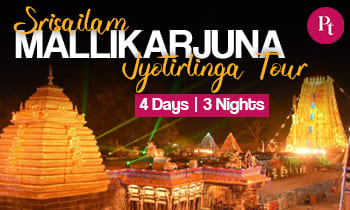


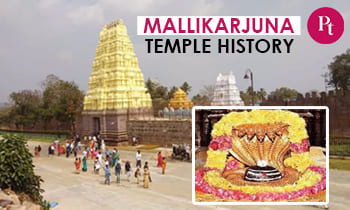

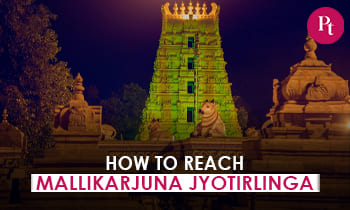
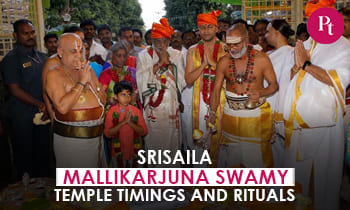
 Call
Call WhatsApp
WhatsApp Enquiry
Enquiry
Where to stay at Srisailam? Are good hotels of Andhr Pradesh Tourism available there?